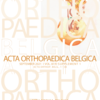Hemiarthroplasty with cementless intramedullary stem versus proximal femoral nail in the treatment of unstable intertrochanteric fractures in elderly patients
Advanced age ; cementless intramedullary stem ; elderly ; mortality ; proximal femoral nail ; unstable intertrochanteric fracture
Published online: Oct 08 2021
Abstract
Several methods are used in the treatment of unstable intertrochanteric hip fractures in elderly patients with high mortality and morbidity. The aim of this study was to compare and present the clinical and radiological results of two alternative methods : cementless distal intramedullary stems and proximal femoral nail (PFN).
One hundred and seventeen patients who were over 70 years of age and operated on in our clinic for unstable intertrochanteric fractures between January 2014 and January 2018 were included in this study. In addition to the sociodemographics, patients’ Singh index, type of fracture, time to surgery, duration of surgery, blood need, blood loss, length of hospital stay, concomitant diseases, complications, ASA scores, time to mortality and mobilization statuses were recorded. The data collected was evaluated using the SPSS v.23 software.
The duration of surgery, intraoperative bleeding amount, postoperative drainage and blood require- ment amounts, and the use of fluoroscopy in HA were significantly higher than PFN (p<0.001). There was no significant difference between the groups in terms of one-year mortality rate. Similarly, no significant difference was detected between the groups in terms of the latest mobilization status of the patients.
Patients who underwent HA were found to be associated with high bleeding amount and long duration of surgery. The groups exhibited similar results in terms of one-year mortality rate and functional results. Neither type of the implants is superior to the other, therefore both can be effectively used in the treatment of unstable hip fractures in the elderly. On the other hand, the femoral stem design in the study is a alternative treatment method for uIT fractures but the surgery is technically challenging and should be undertaken by an experienced arthroplasty surgeon.
